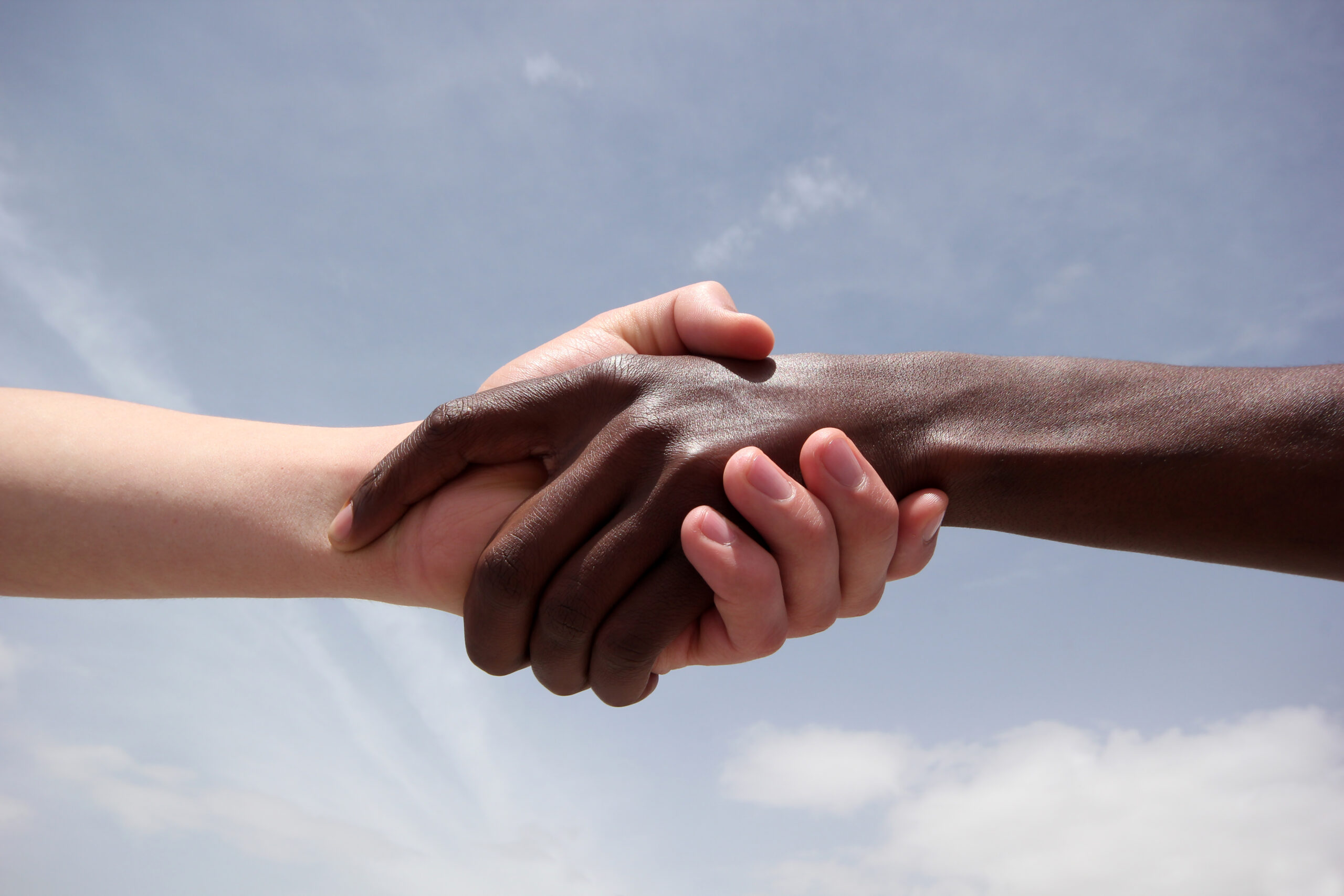This past spring, George Floyd, a Black man in Minneapolis, Minnesota was killed while being arrested by local police. The incident, along with the deaths of Breonna Taylor and Ahmaud Arbery earlier in the spring (and countless others before and since), triggered uprisings across the state, nation, and around the world. Many parents and caregivers had begun to wrestle with the question of how to explain racial injustice, racism, and uprisings to their child or children and many more grappled with these questions in subsequent weeks. Dr. Katie Lingras, a child psychologist and University of Minnesota Medical School Assistant Professor in the Department of Psychiatry and Behavioral Sciences, shares a few common questions caregivers may have and recommends some strategies for addressing these complex topics with children.
“My daughter’s too young to understand all of that.”
- As humans, we are wired to notice difference. Studies have shown that babies as young as three months detect differences in skin color and make choices based on those differences.
- We also know that most of these choices during infancy are not yet based on biases, but rather exposure.
- What to do:
-
- Talk about and expose children to differences.
- Mix it up — get yourself and your child into spaces that have diversity.
- Acknowledge and discuss holidays, traditions, dress, and other aspects of culture that are different from your own.
- Celebrate differences as interesting, positive, beautiful.
“I don’t want to ruin his innocence,” or “This is too complicated for kids to understand”
- Difficult topics can be made developmentally appropriate. Children don’t necessarily need to know all the details in order to understand the basics. For instance, young children shouldn’t be exposed to graphic videos of police-involved deaths, but they can understand that “a policeman hurt a Black man, and he died, and people are angry about that.”
- What to do:
-
- Remember to be child-led: use their existing knowledge, observations, or questions to guide you, but take advantage of (and look for) opportunities to build your conversation. For instance, a lawn sign can be a pretty rainbow or an opportunity to talk about what ‘All Are Welcome’ means. A Black Lives Matter sign can be an opportunity to practice letter recognition or the start of a conversation about white privilege. Recognize that for some it’s a privilege to choose whether to have a conversation about race; people of color do not always have this option with their children. Know that there are developmentally appropriate ways to have nearly any conversation.
- Use children’s books to help explain instances of police-involved deaths and other injustices that individuals who are Black, Indigenous, and/or people of color experience.
Video of reading of “Something Happened in My Town”
Video of reading of “Wings”
“I’ll just wait until they ask questions; then, we can talk about it.”
- Kids pick up messages even when we don’t say them out loud. By not talking about race and racism, kids may get the unintentional message that these things are not okay to talk about. They may also pick up information from others and draw conclusions that are incomplete or inaccurate.
- What to do:
-
- Talk early to your children about race and different identities to ensure that they are getting explicit and intentional messages proactively. This will also help shape how they see and understand difference.
- Teach explicitly about racism and antiracism.
- Teach about privilege and, for white children, give name to white privilege (see link below).
- Use concepts like kindness and fairness which children understand (just ask any preschooler who didn’t get a turn with a preferred toy!). This can help build the foundation for talking about more complex topics like systemic racism and discrimination.
- Remind children to be an “upstander”’ (someone who stands up for what is right) when they see discrimination happening.
“Our family believes all people are created equal — we don’t see color.”
- This may sound like a nice sentiment, but saying “we don’t see color” actually erases identity. By ‘not seeing color’ we are unintentionally saying “I don’t see you” or “I don’t acknowledge your experience.” Seeing color communicates “I see you and I am trying to understand you and your experience and acknowledge that.”
- What to do:
-
- Encourage your children to notice difference and teach them the appropriate terms to describe what they see. For instance, explain that “people have skin in all different shades and darker skin is due to something called melanin, which some have more of than others.”
- Incorporate language to recognize and describe other types of difference as well. For example, in book illustrations, point out curly and straight hair, glasses/no glasses, different family structures, different cultural beliefs or backgrounds, etc.
“I have some books on civil rights. That’s a good start, right?”
- Understanding history is important. Much of American history (particularly that pertaining to Black and African American history) is not taught in traditional school textbooks. So, adding to that limited content is important.
- What to do:
-
- Use children’s books to help children understand these complex topics and events.
- Make sure children also see diverse faces in books about ‘everyday’ activities, not just in civil rights books, which would limit their understanding and exposure. Children need to see faces of color and other forms of diversity, ability, etc. in their books about starting school, going camping, visiting family, etc.
- Talk about privilege – especially white privilege — books like Not My Idea are a good starting point for young children.
- Expand your social circle, media consumption, etc. Children do what they see. If they don’t see it, they won’t know it.
“Okay, but I don’t need to talk about protests, uprisings, and civil unrest, do I?”
- It might be easy to avoid this part of the discussion, especially if you live in a place that hasn’t been directly impacted. But it is important to consider what your children might hear from others.
- What to do:
-
- As with any sensitive topic, it is better to be proactive than wait for children to hear messages you don’t agree with. Here are a few tips for this particular part of the conversations, including specific language suggestions.
- Embrace Race has some great ideas for talking with kids of color.
Don’t forget to do your own work as you prepare for this process.
- In order to have conversations about race, racism, and identity with children, it is critical to do some self-reflection on your own explicit and implicit biases, your upbringing, and your experiences. As humans, we are all wired to have biases.
- What to do:
-
- Reflect on your own biases, education, and actions. This is critical in talking to children. The goal is not to rid ourselves of them (that’s nearly impossible!), but to become aware so we can address and challenge them in ourselves and others.
- And, adults aren’t required to have all the answers. In fact, learning together with your child can be a great model of the fact that learning about equity, diversity, inclusion, and antiracism is a lifelong endeavor. And, many of us are just beginning the long journey.
“Do not confine your children to your own learning, for they were born in another time.” — Chinese proverb
For more resources related to racism and diversity, we suggest you check out:
-
- the six sessions of the 2018 OneOp Virtual Conference Cultural Competency: Awareness, Action, and Advocacy that addresses topics including privilege and power, race, equity, dis/ability, intersectionality, authentic dialogue, sexual orientation, gender expression, and health disparities.
- the five-part podcast series, Moving Toward Inclusive Practice with Dr. Anne Phibbs, that can help you on your journey toward a more inclusive, culturally-informed way of working.
Writers Biography
 Dr. Katherine (Katie) Lingras was the University of Minnesota Extension Child Youth & Family Consortium’s 2018 Scholar in Residence. Dr. Lingras serves on the faculty and co-directs the Early Childhood Mental Program in the UMN Department of Psychiatry. She specializes in social-emotional development in early and middle childhood, with an emphasis on children on children who experience traumatic events.
Dr. Katherine (Katie) Lingras was the University of Minnesota Extension Child Youth & Family Consortium’s 2018 Scholar in Residence. Dr. Lingras serves on the faculty and co-directs the Early Childhood Mental Program in the UMN Department of Psychiatry. She specializes in social-emotional development in early and middle childhood, with an emphasis on children on children who experience traumatic events.
Photo source: Adobe stock













